
| < |
Home / |
Astronomy / |
Meteors / |
Leonids / |
2001 |
> |
|---|
1257 meteors in 1.5 hour! Wow!
2001/11/17 afternoon. Forecast is clear for tonight. Unusual for Pittsburgh! Excited.
7:00pm EST. Dense fog starts to form outside. Wagman observatory site is still clear. AAAP mailing list is filled with all kinds of predictions.
11:00pm. Wagman is reportedly totally fogged in. Decide to drive 100 miles north to Oil Region Astronomical Society observatory.
 |
| Oil Region Astronomical Society observatory |
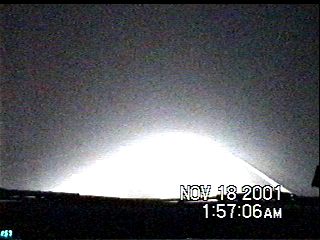 |
| Driving in fog |
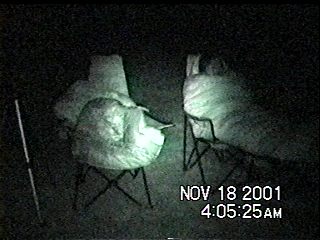 |
| Chair and sleep bag |
 |
 |
 |
 |
4:43am. A fireball left a persistent trail in the sky. I draw the following sketches from memory. The stars are Orion and Taurus, Saturn. The trail lasted for more than 5 minutes.
 Immediately after the meteor, the trail is straight. |
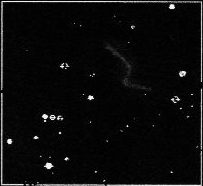 30 seconds later, it starts to bend. |
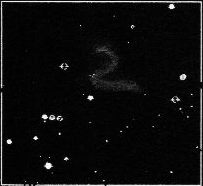 1 minute later, it bends into a 'V'. |
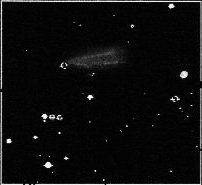 1 minute 30 seconds later, the two arms fold together. |
5:10am. Saw a somewhat triangle shaped wedge light (yellowish compared to the winter milky way) before twilight. From horizon it tilted a little to the right and ended in the middle of the constellation Leo. It was actually brighter than the winter milky way. Could this be the Zodiacal light? The following sketch is drawn on the second day, so it may not be totally accurate but I think I've reconstructed it the best I can.
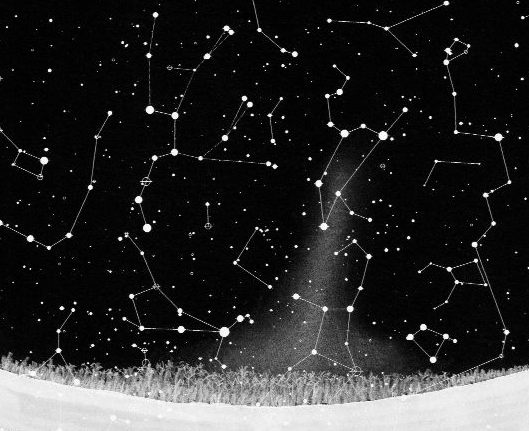 |
| Zodiacal light sketch |
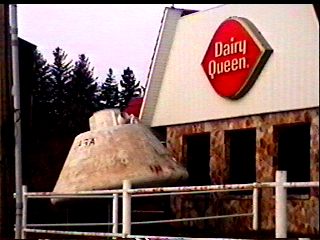 Apollo space capsule |
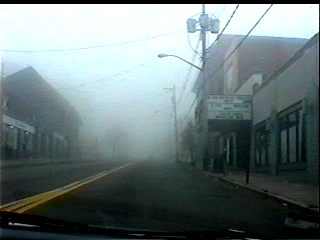 City still foggy |
Report to IMO. You like numbers don't you. Here you go.
International Meteor Organization (IMO) Visual Observing Form - Summary Report
Day:18 Month:11 Year:2001 Begin: 9h19m UT End: 11h07m
Location long. -79.7832947 latit. 41.4713211 IMO code:_______
Site: Oil Region Observatory, Oil City, PA Country: USA
Observer: Xiaojin Zhu IMO code: ZHUXI
Showers: Leonids
| Period(UT) | Field RA | Dec | Teff h | F | lm m | Leonids M | N | Spor M | N |
| 9:19-9:35 | 8h45m | 18 8' | 0.211 | 1 | 6.2 | c | 125 | c | 2 |
| 9:35-9:51 | 8h45m | 18 8' | 0.242 | 1 | 6.2 | c | 129 | c | 5 |
| 9:51-10:05 | 8h45m | 18 8' | 0.204 | 1 | 6.2 | c | 139 | c | 1 |
| 10:05-10:20 | 8h45m | 18 8' | 0.246 | 1 | 6.2 | c | 232 | c | 1 |
| 10:20-10:35 | 8h45m | 18 8' | 0.213 | 1 | 6.2 | c | 242 | c | 3 |
| 10:35-10:51 | 8h45m | 18 8' | 0.223 | 1 | 6.2 | c | 242 | c | 1 |
| 10:51-11:07 | 8h45m | 18 8' | 0.190 | 1 | * | c | 135 | c | 0 |
Comments:
1. counting by dictating to videotape.
2. no time to dictate magnitude of each meteor. roughly equal number of bright and dim ones.
3. twilight started during the last row.
Here is a more detailed data file , where each Leonid is accurate to a second. It's the second time I go over the tape, and the count is slightly different.
| < |
Home / |
Astronomy / |
Meteors / |
Leonids / |
2001 |
> |
|---|